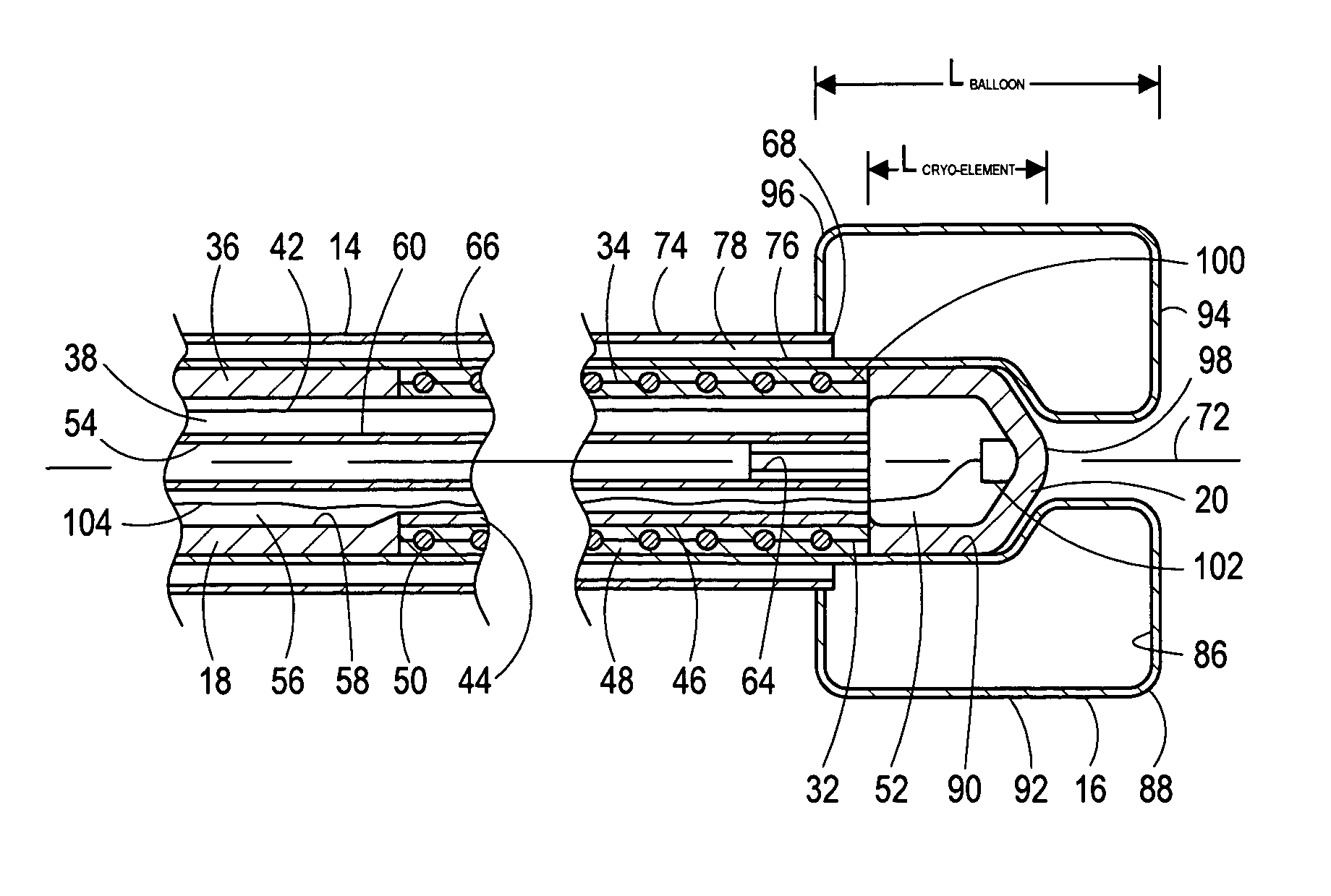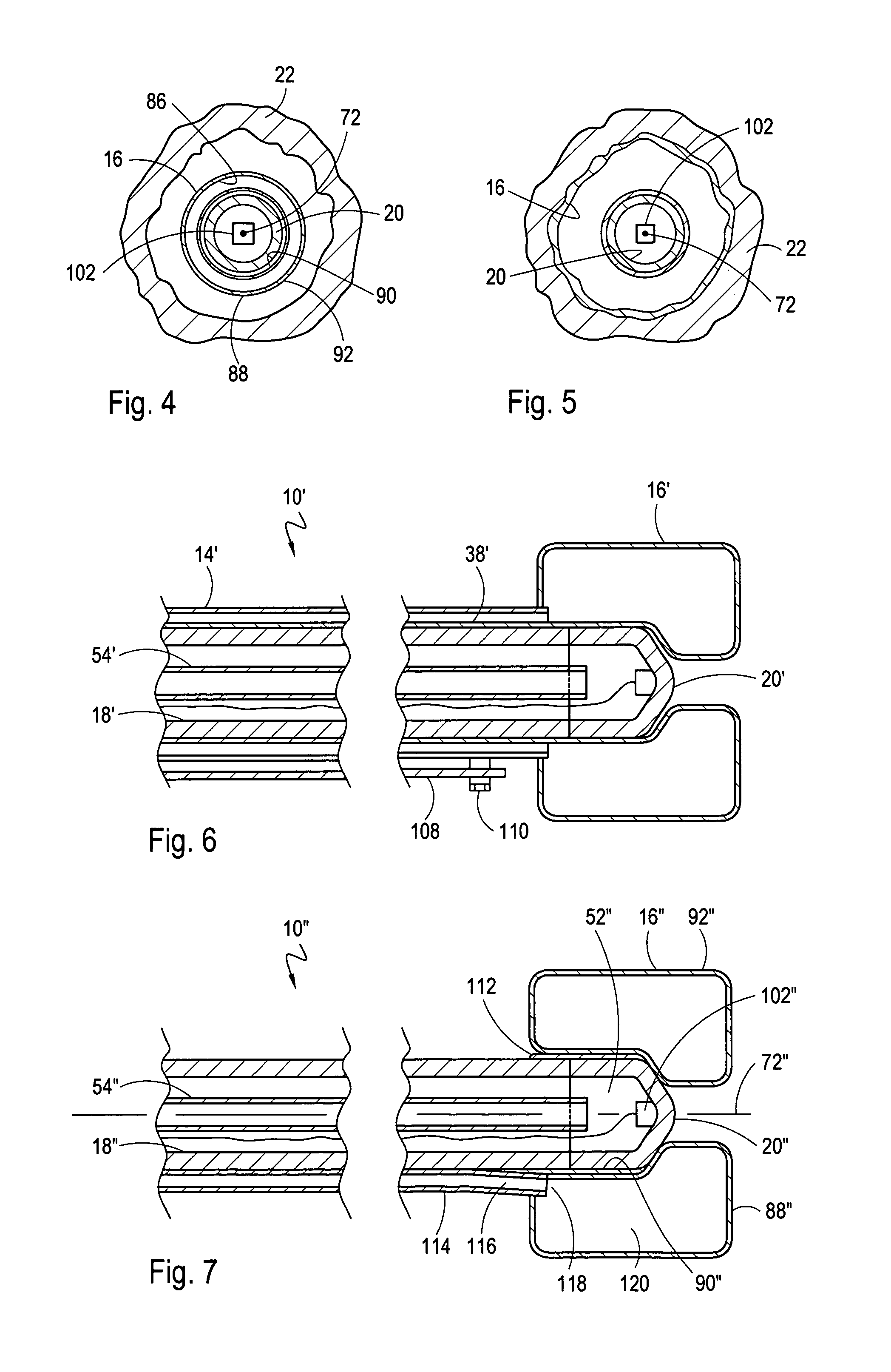Catheter system for performing a single step cryoablation
a single-step, catheter system technology, applied in the field of systems and methods for cryoablation of internal tissue, can solve the problems of increasing the size of the distal end of the catheter, difficult steering and navigation of the catheter through the vasculature of the patient to the treatment site, and non-uniform circumferential ablation that fails to form an adequate conduction block, etc., to achieve quick thawing of the frozen “ice ball”, facilitate the removal of the balloon from the patien
- Summary
- Abstract
- Description
- Claims
- Application Information
AI Technical Summary
Benefits of technology
Problems solved by technology
Method used
Image
Examples
Embodiment Construction
[0026]Referring initially to FIG. 1, a system 10 for cryoablating internal target tissue of a patient 12 is shown. As shown, the system 10 includes a balloon catheter 14 for positioning a balloon 16 (see FIG. 2) and a cryo-catheter 18 for positioning a cryo-element 20 at an-internal treatment site of the patient 12. As further shown in FIG. 1, both the balloon catheter 14 and cryo-catheter 18 can be inserted into a peripheral artery of the patient 12 such as the femoral artery and advanced through the vasculature to a position in the upper body of the patient 12.
[0027]Referring now to FIG. 2, an application of the system 10 is shown wherein a substantially circumferentially shaped target tissue 22 is ablated surrounding the ostium of a pulmonary vein 24. The resulting lesion, which can extend through the wall of the pulmonary vein 24 and into the tissue as shown, can function as a conduction block to prevent the transmission of electrical signals. In greater detail, the lesion can p...
PUM
 Login to View More
Login to View More Abstract
Description
Claims
Application Information
 Login to View More
Login to View More - R&D
- Intellectual Property
- Life Sciences
- Materials
- Tech Scout
- Unparalleled Data Quality
- Higher Quality Content
- 60% Fewer Hallucinations
Browse by: Latest US Patents, China's latest patents, Technical Efficacy Thesaurus, Application Domain, Technology Topic, Popular Technical Reports.
© 2025 PatSnap. All rights reserved.Legal|Privacy policy|Modern Slavery Act Transparency Statement|Sitemap|About US| Contact US: help@patsnap.com



